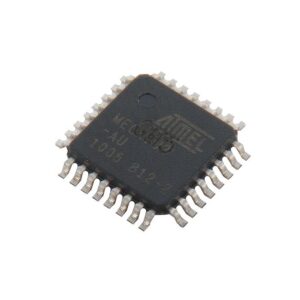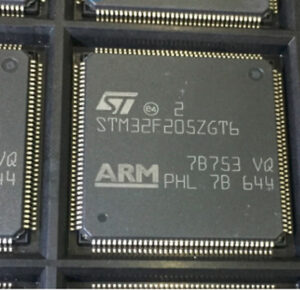 Recover Secured MCU ATmega8U2 Flash Heximal
Recover Secured MCU ATmega8U2 Flash Heximal
Recover Secured MCU ATmega8U2 Flash Heximal after unlock atmega8 microcontroller flash memory protection and extract avr chip atmega8u2 binary code from its flash and eeprom memory;
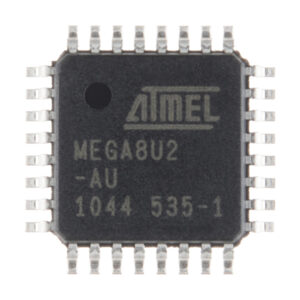
Recover Secured MCU ATmega8U2 Flash Heximal after unlock atmega8 microcontroller flash memory protection and extract avr chip atmega8u2 binary code from its flash and eeprom memory
The Power-down mode saves the register contents but freezes the Oscillator, disabling all other chip functions until the next interrupt or Hardware Reset. In Standby mode, the Crystal/Resonator Oscillator is running while the rest of the device is sleeping when pulling flash content of microchip atmega8u2 mcu memory. This allows very fast start-up combined with low power consumption. In Extended Standby mode, the main Oscillator continues to run.
The device is manufactured using Atmel’s high-density nonvolatile memory technology. The on- chip ISP Flash allows the program memory to be reprogrammed in-system through an SPI serial interface, by a conventional nonvolatile memory programmer, or by an on-chip Boot program running on the AVR core. The boot program can use any interface to download the application program in the application Flash memory when restoring atmega8l microcomputer flash data. Software in the Boot Flash section will continue to run while the Application Flash section is updated, providing true Read-While-Write operation. By combining an 8-bit RISC CPU with In-System Self-Programmable Flash on a monolithic chip, the Atmel ATmega8U2/16U2/32U2 is a powerful microcontroller that provides a highly flexible and cost effective solution to many embedded control applications.
 Microchip PIC24FJ32GP203 MCU Flash Memory Heximal Restoration
Microchip PIC24FJ32GP203 MCU Flash Memory Heximal Restoration
Microchip PIC24FJ32GP203 MCU Flash Memory Heximal Restoration including unlocking PIC24FJ32GP203 MCU program memory and extract pic24fj32gp203 secured microcontroller flash memory source code;
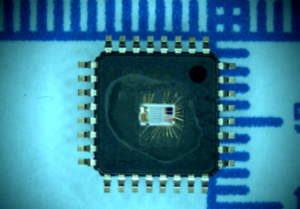
Microchip PIC24FJ32GP203 MCU Flash Memory Heximal Restoration including unlocking PIC24FJ32GP203 MCU program memory and extract pic24fj32gp203 secured microcontroller flash memory source code
In recent years, large value, low-voltage, surface-mount ceramic capacitors have become very cost-effective in sizes up to a few tens of microfarad. The low-ESR, small physical size and other properties make ceramic capacitors very attractive in many types of applications.
Ceramic capacitors are suitable for use with the internal voltage regulator of this microcontroller. However, some care is needed in selecting the capacitor to ensure that it maintains sufficient capacitance over the intended operating range of the application.
Typical low-cost, 10 μF ceramic capacitors are available in X5R, X7R and Y5V dielectric ratings (other types are also available, but are less common). The initial tolerance specifications for these types of capacitors are often specified as ±10% to ±20% (X5R and X7R) or -20%/+80% (Y5V) when breaking pic24fj16ga002 microcontroller flash memory heximal. However, the effective capacitance that these capacitors provide in an application circuit will also vary based on additional factors, such as the applied DC bias voltage and the temperature. The total in-circuit tolerance is, therefore, much wider than the initial tolerance specification.
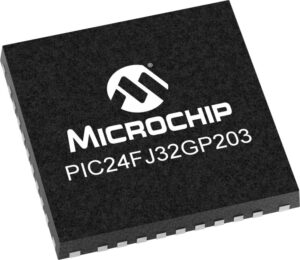
unlock locked microprocessor PIC24FJ32GP203 memory and readout embedded firmware code from microcontroller chip PIC24FJ32GP203 flash memory
The X5R and X7R capacitors typically exhibit satisfactory temperature stability (ex: ±15% over a wide temperature range, but consult the manufacturer’s data sheets for exact specifications). However, Y5V capacitors typically have extreme temperature tolerance specifications of +22%/-82% when recover pic24fj32gp202 mcu flash memory program. Due to the extreme temperature tolerance, a 10 μF nominal rated Y5V type capacitor may not deliver enough total capacitance to meet minimum internal voltage regulator stability and transient response requirements. Therefore, Y5V capacitors are not recommended for use with the internal regulator if the application must operate over a wide temperature range.
 Recover Secured MCU PIC24FJ32GP202 Flash Program
Recover Secured MCU PIC24FJ32GP202 Flash Program
Recover Secured MCU PIC24FJ32GP202 Flash Program from its memory needs to crack microcontroller pic24fj32gp202 flash memory and extract source code from pic24fj32gp202 microprocessor flash memory;
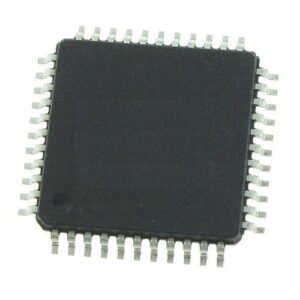
Recover Secured MCU PIC24FJ32GP202 Flash Program from its memory needs to crack microcontroller pic24fj32gp202 flash memory and extract source code from pic24fj32gp202 microprocessor flash memory
During programming and debugging, the resistance and capacitance that can be added to the pin must be considered. Device programmers and debuggers drive the MCLR pin. Consequently, specific voltage levels (VIH and VIL) and fast signal transitions must not be adversely affected. Therefore, specific values of R1 and C1 will need to be adjusted based on the application and PCB requirements.
For example, it is recommended that the capacitor, C1, be isolated from the MCLR pin during programming and debugging operations by using a jumper when executing microcontroller pic24fj16ga002 software decryption. The jumper is replaced for normal run-time operations. Any components associated with the MCLR pin should be placed within 0.25 inch (6 mm) of the pin.
- R1 ≤ 10 kΩ is A suggested starting value is 10 kΩ. Ensure that the MCLR pin VIH and VIL specifications are met.
- R2 ≤ 470Ω will limit any current flowing into MCLR from the external capacitor, C, in the event of a MCLR pin breakdown, due to Electrostatic Discharge (ESD) or Electrical Overstress (EOS). Ensure that the MCLR pin VIH and VIL specifications are met;
A low-ESR (< 5Ω) capacitor is required on the VCAP pin to stabilize the voltage regulator output voltage. The VCAP pin must not be connected to VDD and must use a capacitor of 10 µF connected to ground to break microcontroller pic24fj16ga002 flash memory heximal program. The type can be ceramic or tantalum. Suitable examples of capacitors are shown in Table 2-1. Capacitors with equivalent specifications can be used.
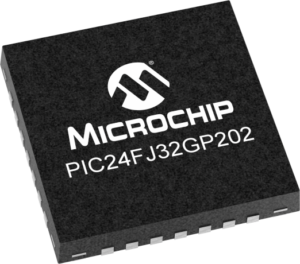
crack secured microcontroller PIC24FJ32GP202 and readout mcu chip PIC24FJ32GP202 flash memory program and eeprom memory data
Designers may use Figure 2-3 to evaluate the ESR equivalence of candidate devices. The placement of this capacitor should be close to VCAP. It is recommended that the trace length not exceed 0.25 inch (6 mm). Refer to 27.4 On-Chip Voltage Regulator for additional information.
 Reverse Secured STM32F207VCT6 Microprocessor Flash Heximal
Reverse Secured STM32F207VCT6 Microprocessor Flash Heximal
Reverse Secured STM32F207VCT6 Microprocessor Flash Heximal and dump embedded firmware from stm32f207vct6 flash memory, extract source code from stm32f207vct6 flash memory;
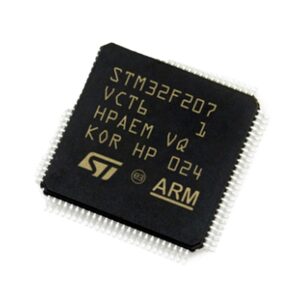
Reverse Secured STM32F207VCT6 Microprocessor Flash Heximal and dump embedded firmware from stm32f207vct6 flash memory, extract source code from stm32f207vct6 flash memory;
Peripheral available only on STM32F207xx devices.
The STM32F207xx devices provide an IEEE-802.3-2002-compliant media access controller (MAC) for Ethernet LAN communications through an industry-standard medium- independent interface (MII) or a reduced medium-independent interface (RMII).
The STM32F207xx requires an external physical interface device (PHY) to connect to the physical LAN bus (twisted-pair, fiber, etc.). the PHY is connected to the STM32F207xx MII port using 17 signals for MII or 9 signals for RMII, and can be clocked using the 25 MHz (MII) or 50 MHz (RMII) output from the STM32F207xx by restoring stm32f205zct6 locked mcu chip memory content.
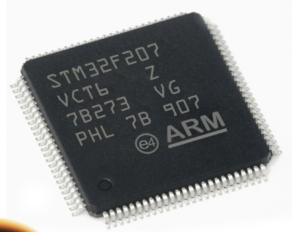
obrnuti inženjer osigurao STM32F207VCT6 mikroprocesorski sustav otpora neovlaštenog mijenjanja i program za flash memoriju za očitavanje i softver iz otključanog mikrokontrolera STM32F207VCT6 kopirati ugrađeni firmware izvornog koda na novi STM32F207VCT6 zaštitni MCU čip,
The STM32F207xx includes the following features:
Supports 10 and 100 Mbit/s rates
Dedicated DMA controller allowing high-speed transfers between the dedicated SRAM and the descriptors (see the STM32F20x and STM32F21x reference manual for details)
Tagged MAC frame support (VLAN support)
Half-duplex (CSMA/CD) and full-duplex operation
MAC control sublayer (control frames) support
32-bit CRC generation and removal
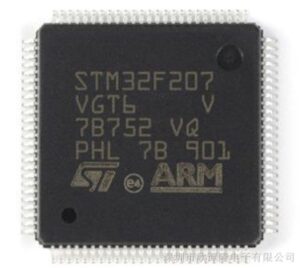
inżynieria wsteczna zabezpieczony STM32F207VCT6 mikroprocesorowy system odporności na manipulacje oraz odczyt programu pamięci flash i oprogramowania z odblokowanego mikrokontrolera STM32F207VCT6 kopiowania wbudowanego oprogramowania układowego kodu źródłowego do nowego STM32F207VCT6 ochronnego układu MCU,
Several address filtering modes for physical and multicast address (multicast and group addresses)
32-bit status code for each transmitted or received frame
Internal FIFOs to buffer transmit and receive The transmit FIFO and the receive FIFO are both 2 Kbytes (4 Kbytes in total)
Supports hardware PTP (precision time protocol) in accordance with IEEE 1588 2008 (PTP V2) with the time stamp comparator connected to the TIM2 input
Triggers interrupt when system time becomes greater than target time
 ARM Microcontroller STM32F207IGT6 Flash Firmware Recovery
ARM Microcontroller STM32F207IGT6 Flash Firmware Recovery
ARM Microcontroller STM32F207IGT6 Flash Firmware Recovery needs to crack protected MCU STM32F207IGT6 protective system then copy embedded flash content from STM32F207IGT6 MCU memory;
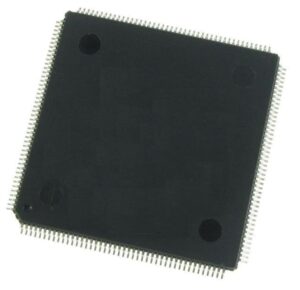
ARM Microcontroller STM32F207IGT6 Flash Firmware Recovery needs to crack protected MCU STM32F207IGT6 protective system then copy embedded flash content from STM32F207IGT6 MCU memory
USART1, USART2, USART3 and USART6 also provide hardware management of the CTS and RTS signals, Smart Card mode (ISO 7816 compliant) and SPI-like communication capability. All interfaces can be served by the DMA controller.
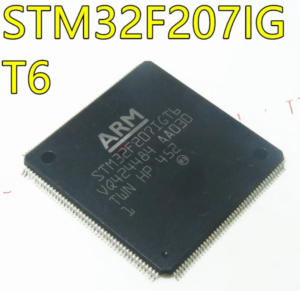
Odzyskiwanie wbudowanego oprogramowania układowego z mikrokontrolerem zabezpieczonym STM32F207IGT6 pamięcią flash ARM musi złamać chroniony system ochronny MCU STM32F207IGT6, a następnie skopiować osadzoną zawartość flash danych binarnych lub programu szesnastkowego z STM32F207IGT6 oryginalnej pamięci mikroprocesora głównego
The STM32F20x devices feature up to three SPIs in slave and master modes in full-duplex and simplex communication modes. SPI1 can communicate at up to 30 Mbits/s, while SPI2 and SPI3 can communicate at up to 15 Mbit/s when breaking arm mcu stm32f205rbt6 flash memory. The 3-bit prescaler gives 8 master mode frequencies and the frame is configurable to 8 bits or 16 bits.
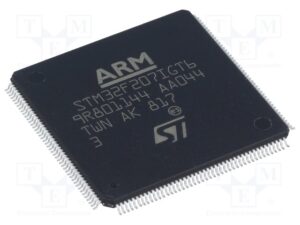
STMicroelectronics STM32F207IGT6 locked mcu fuse bit unlocking and extract embedded firmware heximal program from STMicroelectronics STM32F207IGT6 microprocessor flash memory
The hardware CRC generation/verification supports basic SD Card/MMC modes. All SPIs can be served by the DMA controller. The SPI interface can be configured to operate in TI mode for communications in master mode and slave mode. Two standard I2S interfaces (multiplexed with SPI2 and SPI3) are available. They can operate in master or slave mode, in half-duplex communication modes, and can be configured to operate with a 16-/32-bit resolution as input or output channels.
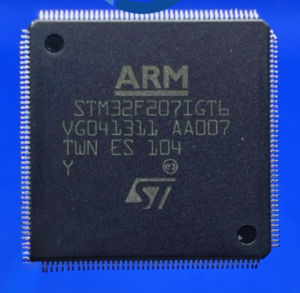
ARM osigurani mikrokontroler STM32F207IGT6 oporavak ugrađenog firmvera mora razbiti zaštićeni MCU STM32F207IGT6 zaštitni sustav, a zatim kopirati ugrađeni flash sadržaj binarnih podataka ili heksimalnog programa iz STM32F207IGT6 izvorne glavne mikroprocesorske memorije
Audio sampling frequencies from 8 kHz up to 192 kHz are supported. When either or both of the I2S interfaces is/are configured in master mode, the master clock can be output to the external DAC/CODEC at 256 times the sampling frequency. All I2Sx interfaces can be served by the DMA controller when recover embedded flash memory content from arm microcontroller stm32f205rct6.
 Locked STM32F207VET6 Microcontroller Firmware Code Restoration
Locked STM32F207VET6 Microcontroller Firmware Code Restoration
Locked STM32F207VET6 Microcontroller Firmware Code Restoration is a process to crack protective stm32f207ve mcu flash memory then copy stm32f207vet6 mcu flash content to new microprocessor;
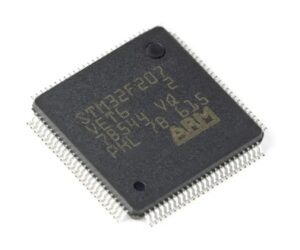
Locked STM32F207VET6 Microcontroller Firmware Code Restoration is a process to crack protective stm32f207ve mcu flash memory then copy stm32f207vet6 mcu flash content to new microprocessor;
These timers are based on a 16-bit auto-reload upcounter and a 16-bit prescaler. TIM10 and TIM11 feature one independent channel, whereas TIM9 has two independent channels for input capture/output compare, PWM or one-pulse mode output. They can be synchronized with the TIM2, TIM3, TIM4, TIM5 full-featured general-purpose timers. They can also be used as simple time bases.
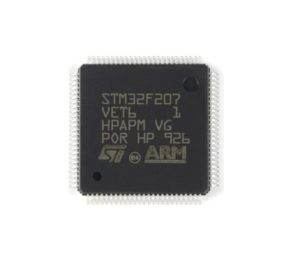
Zaključana STM32F207VET6 mikrokontrolera Ugrađena obnova firmware koda postupak je za razbijanje zaštitne STM32F207VET6 MCU flash memorije, a zatim izdvajanje STM32F207VET6 šifriranog mikroprocesorskog flash sadržaja u formatu binarne datoteke ili heksimalnih podataka u novi mikroprocesor
These timers are based on a 16-bit auto-reload upcounter and a 16-bit prescaler. TIM13 and TIM14 feature one independent channel, whereas TIM12 has two independent channels for input capture/output compare to recover stm32f205rc microcontroller’s flash memory heximal, PWM or one-pulse mode output. They can be synchronized with the TIM2, TIM3, TIM4, TIM5 full-featured general-purpose timers.
They can also be used as simple time bases.
These timers are mainly used for DAC trigger and waveform generation. They can also be used as a generic 16-bit time base.
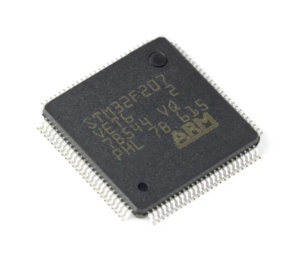
Przywracanie kodu oprogramowania układowego wbudowanego w mikrokontroler z zablokowanym STM32F207VET6 to proces polegający na złamaniu pamięci flash STM32F207VET6 ochronnej MCU, a następnie wyodrębnieniu STM32F207VET6 zaszyfrowanej zawartości flash mikroprocesora w formacie pliku binarnego lub danych szesnastkowych do nowego mikroprocesora
The independent watchdog is based on a 12-bit downcounter and 8-bit prescaler. It is clocked from an independent 32 kHz internal RC and as it operates independently from the main clock, it can operate in Stop and Standby modes. It can be used either as a watchdog to reset the device when a problem occurs, or as a free-running timer for application timeout.
 Reverse Secured STM32F205ZGT6 MCU Flash Program
Reverse Secured STM32F205ZGT6 MCU Flash Program
Reverse Secured STM32F205ZGT6 MCU Flash Program means the embedded heximal file can be readout directly from STM32F205ZGT6 Microcontroller flash memory, decrypt arm microprocessor stm32f205zgt6 memory file;
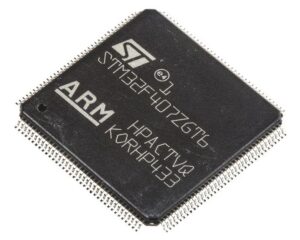
Reverse Secured STM32F205ZGT6 MCU Flash Program means the embedded heximal file can be readout directly from STM32F205ZGT6 Microcontroller flash memory, decrypt arm microprocessor stm32f205zgt6 memory file
The VBAT pin allows to power the device VBAT domain from an external battery or an external supercapacitor.
VBAT operation is activated when VDD is not present.
The VBAT pin supplies the RTC, the backup registers and the backup SRAM.
Note:
When the microcontroller is supplied from VBAT, external interrupts and RTC alarm/events do not exit it from VBAT operation.
When using WLCSP64+2 package, if IRROFF pin is connected to VDD, the VBAT
functionality is no more available and VBAT pin must be connected to VDD by recover arm microcontroller stm32f205rg flash code.
The STM32F20x devices include two advanced-control timers, eight general-purpose timers, two basic timers and two watchdog timers.
All timer counters can be frozen in debug mode.
Table 5 compares the features of the advanced-control, general-purpose and basic timers
The advanced-control timers (TIM1, TIM8) can be seen as three-phase PWM generators multiplexed on 6 channels. They have complementary PWM outputs with programmable inserted dead times. They can also be considered as complete general-purpose timers. Their 4 independent channels can be used for:
- Input capture
- Output compare
- PWM generation (edge- or center-aligned modes)
- One-pulse mode output
If configured as standard 16-bit timers, they have the same features as the general-purpose TIMx timers. If configured as 16-bit PWM generators, they have full modulation capability (0- 100%) in the process of attacking stm32f205vb mcu protective fuse bit.
The TIM1 and TIM8 counters can be frozen in debug mode. Many of the advanced-control timer features are shared with those of the standard TIMx timers which have the same architecture. The advanced-control timer can therefore work together with the TIMx timers via the Timer Link feature for synchronization or event chaining.
 Clone ARM STM32F205ZFT6 Microcontroller Firmware
Clone ARM STM32F205ZFT6 Microcontroller Firmware
Clone ARM STM32F205ZFT6 Microcontroller Firmware needs to readout mcu stmicroelectronics stm32f205zft6 heximal and copy flash memory embedded program to new stm32f205zft6 microprocessor;
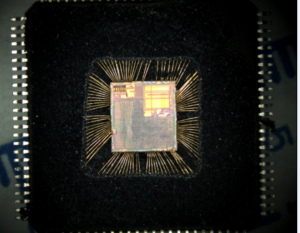
Clone ARM STM32F205ZFT6 Microcontroller Firmware needs to readout mcu stmicroelectronics stm32f205zft6 heximal and copy flash memory embedded program to new stm32f205zft6 microprocessor;
The following conditions must be respected:
- VDD must always be higher than VCAP_1 and VCAP_2 to avoid current injection between power domains (see Figure 8).
- PA0 must be kept low to cover both conditions: until VCAP_1 and VCAP_2 reach 08 V, and until VDD reaches 1.7 V.
- NRST must be controlled by an external reset controller to keep the device under reset when VDD is below 7 V (see Figure 9).
In this mode, when the internal reset is OFF, the following integrated features are no more supported:
- The integrated power-on reset (POR) / power-down reset (PDR) circuitry is
- The brownout reset (BOR) circuitry is
- The embedded programmable voltage detector (PVD) is
VBAT functionality is no more available and VBAT pin must be connected to VDD.
The backup domain of the STM32F20x devices includes:
- The real-time clock (RTC)
- 4 Kbytes of backup SRAM
- 20 backup registers
The real-time clock (RTC) is an independent BCD timer/counter. Its main features are the following:
- Dedicated registers contain the second, minute, hour (in 12/24 hour), week day, date, month, year, in BCD (binary-coded decimal) format.
- Automatic correction for 28, 29 (leap year), 30, and 31 day of the
- Programmable alarm and programmable periodic interrupts with wakeup from Stop and Standby
- It is clocked by a 768 kHz external crystal, resonator or oscillator, the internal low-power RC oscillator or the high-speed external clock divided by 128 will recover arm microcontroller stm32f205rg flash code. The internal low-speed RC has a typical frequency of 32 kHz. The RTC can be calibrated using an external 512 Hz output to compensate for any natural quartz deviation.
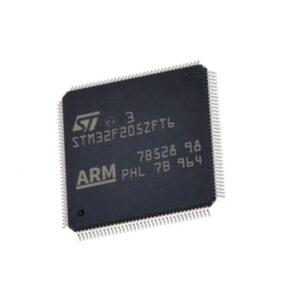
clone locked mcu chip STM32F205ZFT6 flash memory content after crack STM32F205ZFT6 microcontroller fuse bit
- Two alarm registers are used to generate an alarm at a specific time and calendar fields can be independently masked for alarm comparison. To generate a periodic interrupt, a 16-bit programmable binary auto-reload downcounter with programmable resolution is available and allows automatic wakeup and periodic alarms from every 120 µs to every 36 hours when attacking stmicroelectronics stm32f205vb mcu protection.
- A 20-bit prescaler is used for the time base It is by default configured to generate a time base of 1 second from a clock at 32.768 kHz.
- Reference clock detection: a more precise second source clock (50 or 60 Hz) can be used to enhance the calendar
 Locked MCU Chip STM32F205ZCT6 Program Restoration
Locked MCU Chip STM32F205ZCT6 Program Restoration
Locked MCU Chip STM32F205ZCT6 Program Restoration needs to crack stm32f205zct6 processor protective resistance system firstly then extract stm32f205zct6 microcontroller flash memory content;
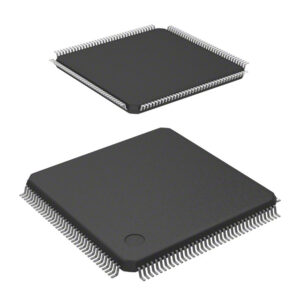
Locked MCU Chip STM32F205ZCT6 Program Restoration needs to crack stm32f205zct6 processor protective resistance system firstly then extract stm32f205zct6 microcontroller flash memory content
This feature is available only on packages featuring the REGOFF pin. The regulator is disabled by holding REGOFF high. The regulator OFF mode allows to supply externally a V12 voltage source through VCAP_1 and VCAP_2 pins.
The two 2.2 µF ceramic capacitors must be replaced by two 100 nF decoupling capacitors. Refer to Figure 19: Power supply scheme.
When the regulator is OFF, there is no more internal monitoring on V12. An external power supply supervisor must be used to monitor the V12 of the logic power domain when breaking stm32f205rb flash memory protection. PA0 pin must be used for this purpose, and act as power-on reset on V12 power domain.
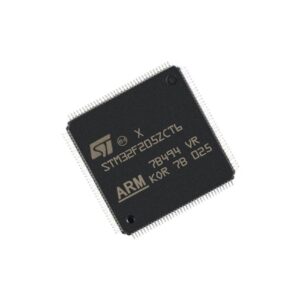
crack locked mcu chip STM32F205ZCT6 and copy embedded heximal firmware from microcontroller STM32F205ZCT6 flash memory
In regulator OFF mode, the following features are no more supported:
- PA0 cannot be used as a GPIO pin since it allows to reset the part of the 2 V logic power domain which is not reset by the NRST pin.
- As long as PA0 is kept low, the debug mode cannot be used at power-on As a consequence, PA0 and NRST pins must be managed separately if the debug connection at reset or pre-reset is required.
Regulator OFF / internal reset ON
On WLCSP64+2 package, this mode is activated by connecting REGOFF pin to VDD and IRROFF pin to VSS. On UFBGA176 package, only REGOFF must be connected to VDD (IRROFF not available). In this mode, VDD/VDDA minimum value is 1.8 V to recover stm32f205rc microcontroller flash memory heximal.
The regulator OFF / internal reset ON mode allows the user to supply externally a 1.2 V voltage source through VCAP_1 and VCAP_2 pins, in addition to VDD.
 Reverse Engineering STM32F205ZE Microcontroller Heximal Code
Reverse Engineering STM32F205ZE Microcontroller Heximal Code
Reverse Engineering STM32F205ZET6 Microcontroller Heximal Code and readout embedded heximal file from STM32F205ZET6 MCU flash memory, copy firmware to new Microprocessor stm32f205zet6;
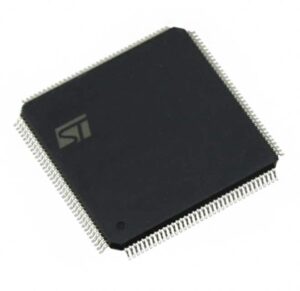
Reverse Engineering STM32F205ZET6 Microcontroller Heximal Code and readout embedded heximal file from STM32F205ZET6 MCU flash memory, copy firmware to new Microprocessor stm32f205zet6
The device remains in reset mode when VDD is below a specified threshold, VPOR/PDR or VBOR, without the need for an external reset circuit. On devices in WLCSP64+2 package, the BOR, POR and PDR features can be disabled by setting IRROFF pin to VDD. In this mode an external power supply supervisor is required (see Section 3.16).
The devices also feature an embedded programmable voltage detector (PVD) that monitors the VDD/VDDA power supply and compares it to the VPVD threshold. An interrupt can be generated when VDD/VDDA drops below the VPVD threshold and/or when VDD/VDDA is higher than the VPVD threshold. The interrupt service routine can then generate a warning message and/or put the MCU into a safe state. The PVD is enabled by software.
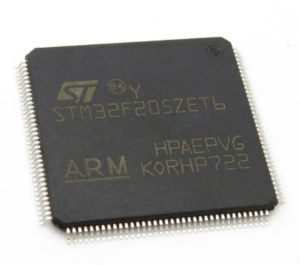
Código heximal del microcontrolador STM32F205ZET6 de ingeniería inversa y lectura del archivo heximal integrado de la memoria flash MCU STM32F205ZET6, copia del firmware al nuevo microprocesador stm32f205zet6
The regulator ON modes are activated by default on LQFP packages.On WLCSP64+2 package, they are activated by connecting both REGOFF and IRROFF pins to VSS, while only REGOFF must be connected to VSS on UFBGA176 package (IRROFF is not available).
VDD minimum value is 1.8 V.
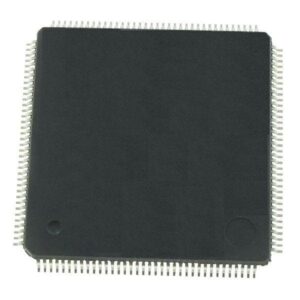
break arm controller stm32f205zet6 fuse bit and extract embedded heximal file from mcu chip’s flash memory
There are three power modes configured by software when the regulator is ON:
- MR is used in the nominal regulation mode
- LPR is used in Stop modes
The LP regulator mode is configured by software when entering Stop mode.
- Power-down is used in Standby
The Power-down mode is activated only when entering Standby mode. The regulator output is in high impedance and the kernel circuitry is powered down, inducing zero consumption. The contents of the registers and SRAM are lost).
Two external ceramic capacitors must be connected on VCAP_1 and VCAP_2 pin. Refer to
Figure 19: Power supply scheme and Table 16: VCAP1/VCAP2 operating conditions.
All packages have the regulator ON feature.
